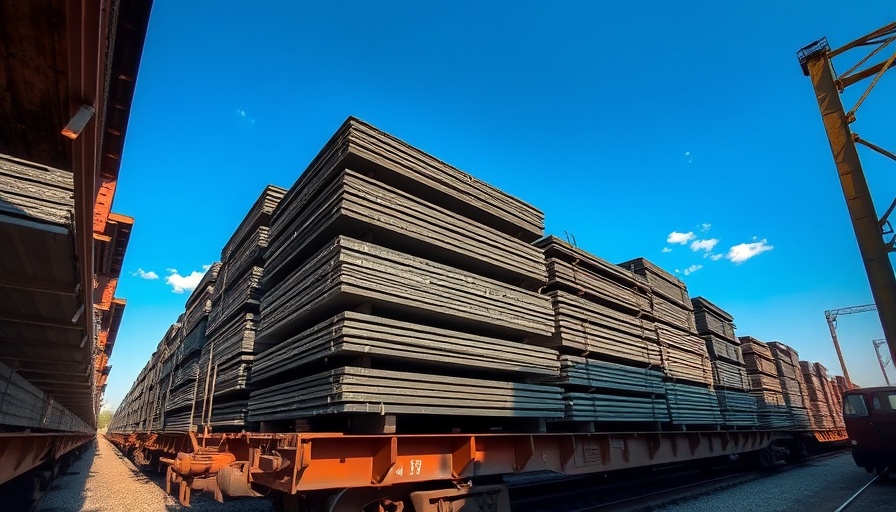
Algoma Steel's Strategic Shift: Embracing Innovation Amid Tariffs
As the fluctuations of U.S. tariffs loom large over the steel industry, Algoma Steel, based in Sault Ste. Marie, is not just weathering the storm but is shifting its strategy towards onshoring plate production. This pivotal change positions the company as a crucial player against the backdrop of increased tariffs and fluctuating trade relations.
Understanding the Tariff Landscape: Impacts on Algoma Steel
The U.S.-Canada trade war has introduced a 25% tariff on Canadian steel, severely impacting Algoma Steel's profitability. This tariff means that every ton of plate and coiled steel shipped to the U.S. incurs additional expenses, which totaled over $10 million for the company in the first quarter of the year alone. With a reported net loss of $24.5 million compared to a profit in the same quarter last year, Algoma Steel’s CEO Michael Garcia has pointed to these tariffs as a key factor contributing to the company's financial challenges.
Financial Resilience Plans Amidst Trade Crisis
Despite these difficulties, Algoma Steel is gearing up to enhance its production capabilities. The company's transition to an electric arc furnace represents a significant modernization effort, which Garcia estimates will allow the company to ramp up plate production to over 650,000 tons annually. As demand from Canadian consumers grows, especially in sectors such as infrastructure and military procurement, the shift to more sustainable production methods could help place Algoma Steel in a competitive position.
Collaborative Efforts: Teaming Up for Future Growth
In an effort to bolster its market position, Algoma has aligned itself with the coalition known as Team Vigilance, which includes various Canadian manufacturers. This partnership focuses on strengthening Canadian shipbuilding and the defense supply chain, showcasing the collective efforts of stakeholders to solidify the domestic steel market against foreign competition. Garcia expresses optimism that Ottawa’s emphasis on investment in these sectors will bolster demand for Algoma's steel plates further.
Looking Towards the Future: A Balanced Approach to Challenges
Garcia remains confident despite the competitive landscape presented by offshore producers from countries like Taiwan and Turkey. Algoma has dramatically enhanced its share of the Canadian steel market, leveraging its unique position as the sole domestic plate producer. With a projection to reach nearly 100,000 tons in plate shipments heading into the next quarter, the company is focused on growth while navigating the complexities of international tariffs and fluctuating demand.
The Broader Economic Picture: Tariffs and Opportunities
The broader economic implications of these tariffs extend beyond Algoma Steel. As Canadian consumers face higher prices for steel, the government and industry leaders are urged to consider policies that protect local production capabilities. Investing in infrastructure and military projects not only benefits companies like Algoma but also fuels the wider economy by creating jobs and enhancing national security.
Conclusion: Taking Practical Steps for Success
Algoma Steel’s evolution reflects the resilience and adaptability required of local manufacturers in today’s turbulent trade environment. As the company enhances its production processes and builds strategic partnerships, it highlights the importance of strong domestic industries for the future of Canadian manufacturing. To stay informed on industry developments and support local businesses, consider connecting with initiatives that promote Canadian production.
 Add Row
Add Row  Add
Add 




 Add Row
Add Row  Add
Add 

Write A Comment